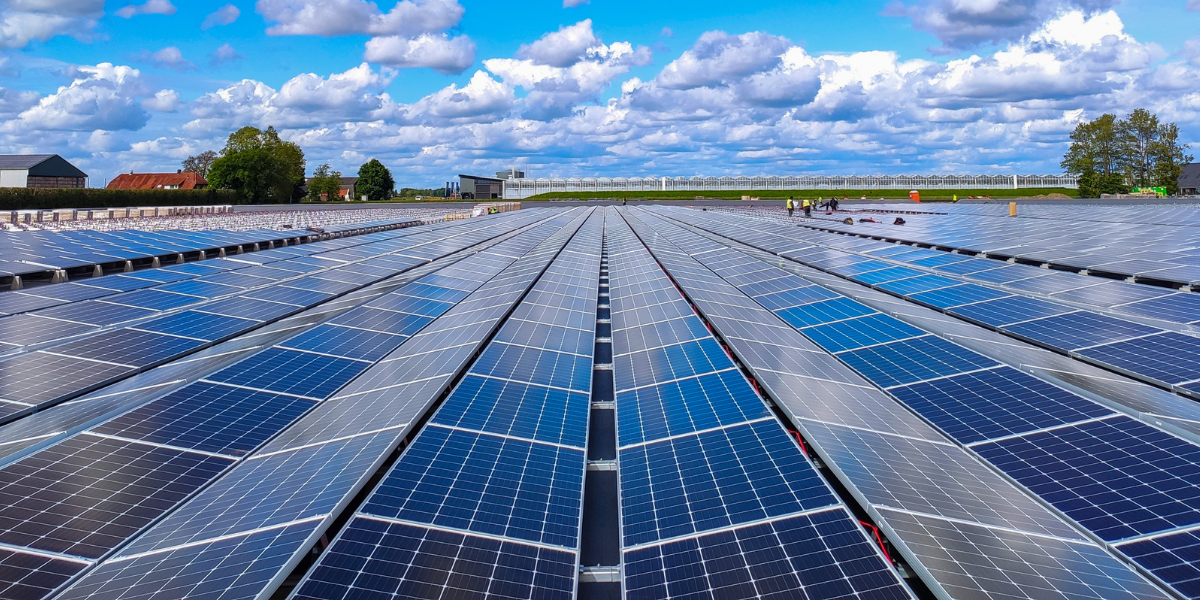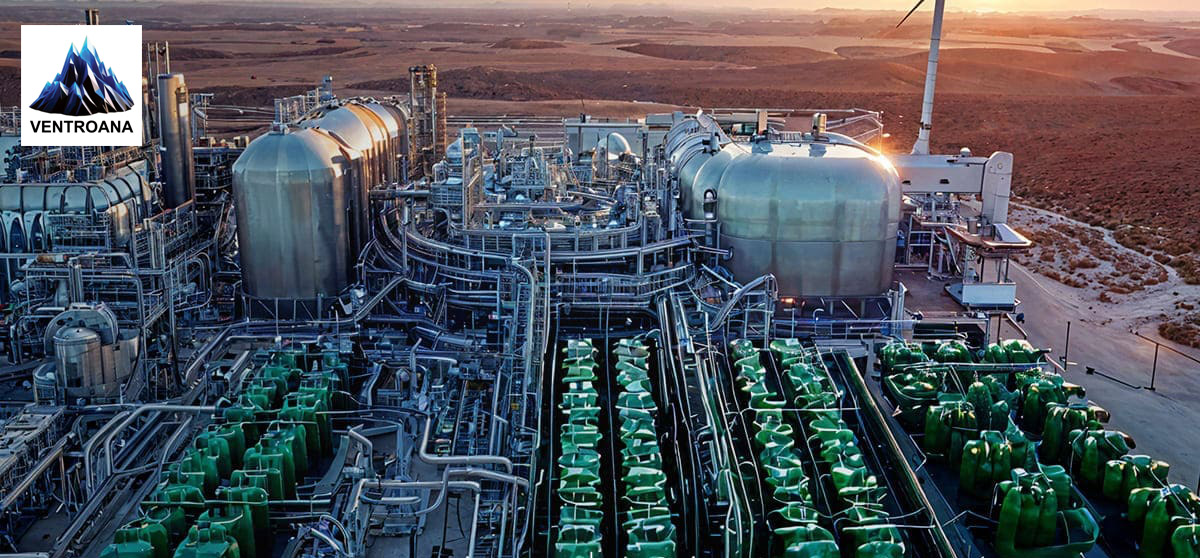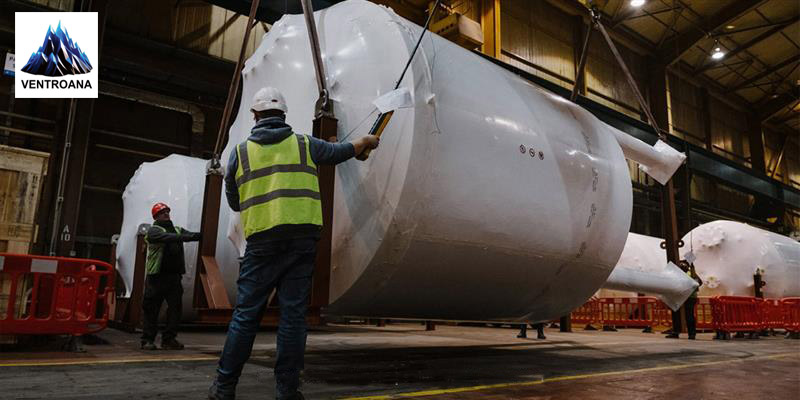Renewables
May 13, 2024

In the question of sustainable energy solutions and how solar power plants work? The answer is solar power which emerges as a beacon of hope. It harnesses the boundless energy of the sun to power our world. Solar energy is derived from the radiant light and heat of the sun. It holds immense potential for generating clean electricity. It also reduces our reliance on fossil fuels. At the heart of this green revolution lie solar power plants.
They are equipped with arrays of solar panels that tirelessly convert sunlight into electricity. Let’s delve deeper into the workings of these marvels. Unravel the mystery behind the question: How do solar panels work?
Solar power plants, also known as solar farms, are vast expanses of land adorned with solar panels. They are strategically positioned to capture sunlight efficiently. These panels, comprising photovoltaic (PV) cells, serve as the backbone of solar energy generation. Unlike traditional power plants that rely on finite resources like coal or natural gas. Solar power plants harness the inexhaustible energy of the sun. It makes them a sustainable choice for meeting our energy needs.
Solar panels generate electricity through a fascinating process that exploits the photovoltaic effect. At the heart of each solar panel lies the photovoltaic cell, typically made of silicon a semiconductor material.
When sunlight strikes the surface of these cells, it excites the electrons and creates an electric charge. This phenomenon generates direct current (DC) electricity, which is then converted into alternating current (AC) by inverters a crucial step for integrating solar power into the grid.
Most solar panels utilize silicon solar cells due to their efficiency and reliability. These cells come in two primary forms: monocrystalline and polycrystalline. Manufacturers craft monocrystalline cells from a single crystal structure, providing higher efficiency and sleeker aesthetics.
On the other hand, manufacturers produce polycrystalline cells from multiple silicon crystals. It offers cost-effectiveness while slightly compromising efficiency. Regardless of the type, silicon solar cells play a pivotal role in transforming sunlight into electricity. It paves the way for a cleaner and sustainable future.
Once solar panels generate electricity, people can utilize it to power homes, businesses, and even entire communities. This renewable energy source reduces our carbon footprint. It also offers energy independence and long-term cost savings. The excess electricity generated during peak sunlight hours can be stored in batteries for use during cloudy days or at night. It ensures a reliable supply of clean energy around the clock.
While photovoltaic cells dominate the solar energy landscape, another technology solar thermal power offers a distinct approach to harnessing solar energy. Solar thermal power plants utilize mirrors or lenses to concentrate sunlight onto a receiver, heating a fluid to produce steam.
This steam drives turbines connected to generators, producing electricity like traditional power plants. Solar thermal power plants hold promise for large-scale electricity generation. It is particularly in regions with abundant sunlight.
The widespread adoption of solar energy brings forth many environmental and economic benefits. It reduces our dependence on fossil fuels. Solar power mitigates greenhouse gas emissions. It curbs climate change and preserves the planet for future generations.
Additionally, the growth of the solar industry stimulates job creation. It fosters technological innovation and bolsters energy security as solar power becomes increasingly affordable and accessible. It also empowers individuals and communities to take control of their energy future while safeguarding the environment.
The solar panels market is projected to reach USD 312.68 billion by 2032 from USD 180.77 billion in 2024, with a 7.1% CAGR.
Global Solar Panels Market Size in USD Billions.
Solar power stands as a renewable and inexhaustible energy reservoir. It is free from harmful greenhouse gas emissions. If the sun continues to radiate its energy, solar power remains a steadfast source of clean energy. It will perpetually be available for our consumption.
Moreover, the carbon footprint associated with solar panels is notably diminutive. With a lifespan exceeding 25 years, solar panels demonstrate remarkable longevity, further contributing to their eco-friendliness. Advancements in material recycling continually reduce the carbon footprint of solar panels. It is in line with our shared dedication to sustainability.
Solar power plants represent a shining example of humanity's ingenuity and commitment to sustainability. These marvels utilize solar energy to produce clean electricity. It harnesses the boundless energy of the sun.
As we strive to transition towards a renewable energy future, understanding how solar panels work is a matter of curiosity. It is just a crucial step towards harnessing the full potential of solar energy. Let us embrace the power of the sun and head towards a cleaner world powered by solar energy.
Ventro Analytics specializes in demystifying solar power plants and elucidating solar panel functionality. Their expertise empowers individuals and businesses to comprehend the complexities of solar energy generation. It fosters a deeper understanding of how solar panels work and their role in sustainable energy solutions.
With Ventro Analytics as a trusted partner, companies can navigate the complexities of solar power plants, embracing innovation for long-term success. To avail of our services, you can send us an email at sales@ventroana.com.
Tags: Solar Energy Solar Power Solar Panels Generate Generate Electricity Solar Farms Renewable Energy Carbon Footprint

Successful Implementation of Green Hydrogen in Power Plants
Discover how green hydrogen revolutionizes power plants with sustainable energy solutions, reducing ...

Driving Innovation and Resilience: Insights from the 10th Annual Energy Supply C...
Gain insights on driving innovation and resilience at the 10th Energy Supply Chain & Procurement Sum...

Understanding EPC Engineering: Key Concepts Explained
Discover the essentials of EPC Engineering, covering contracts, project phases, and roles of EPC con...